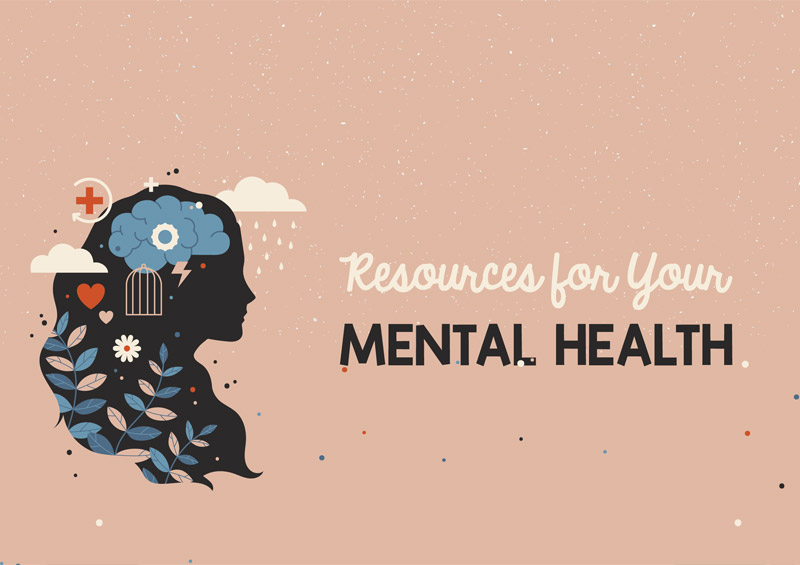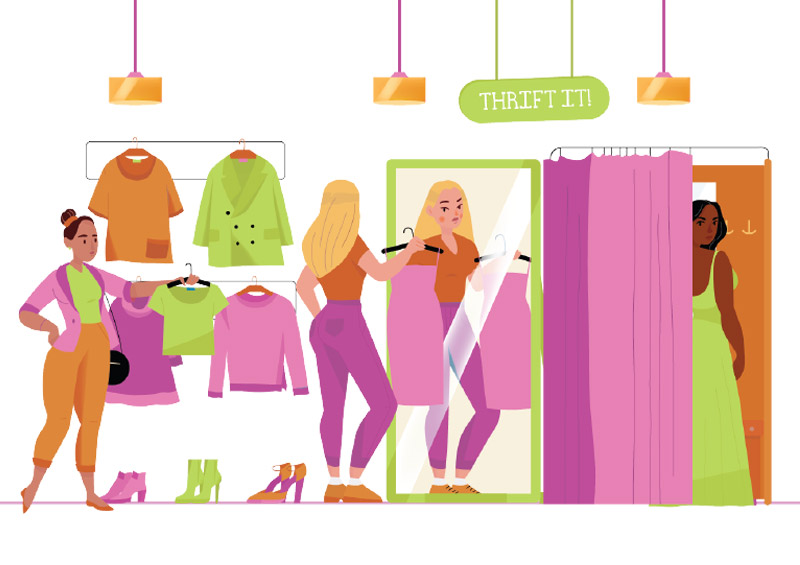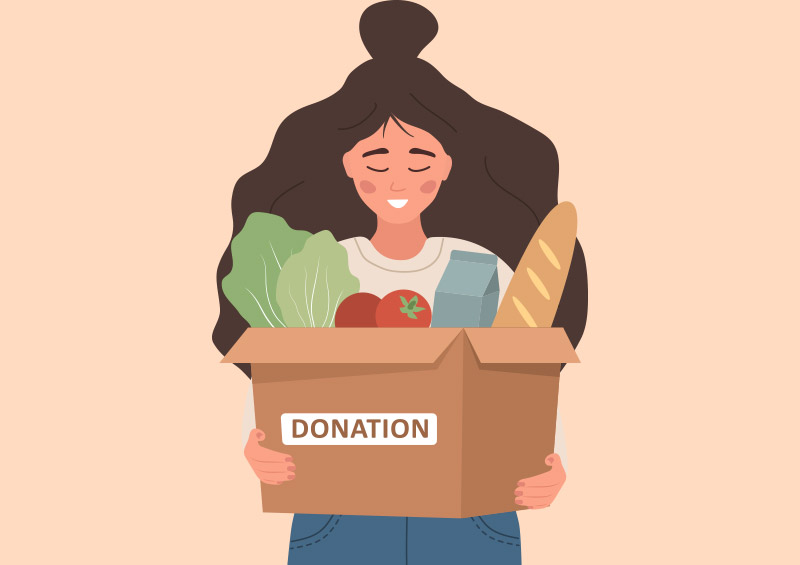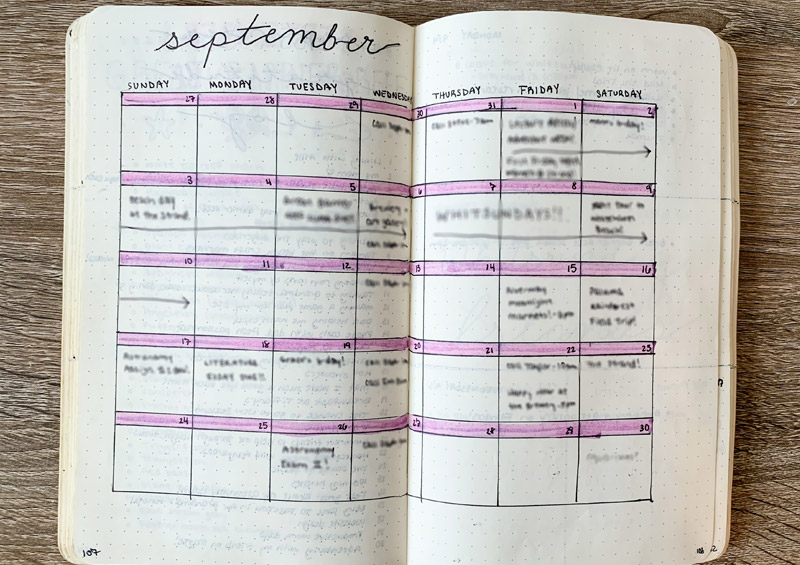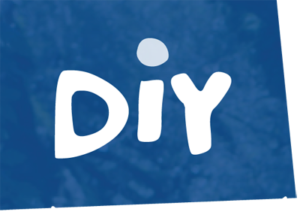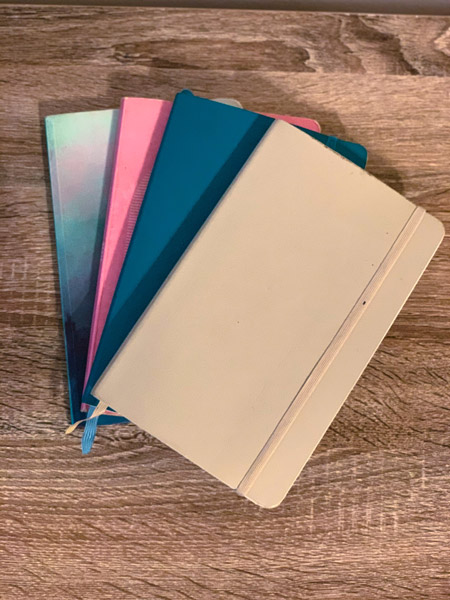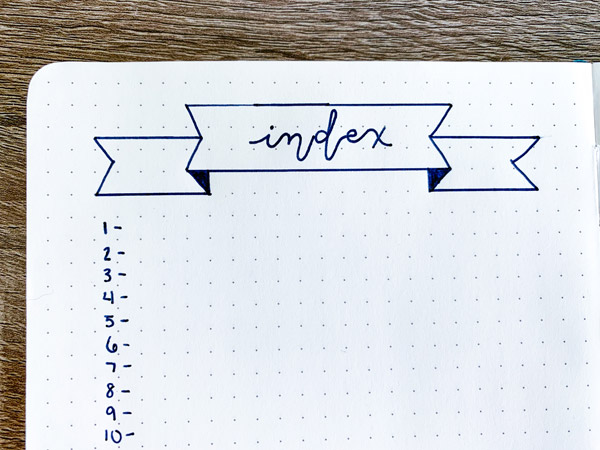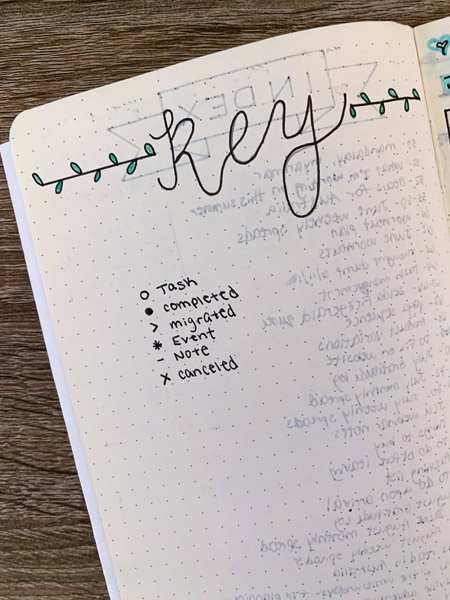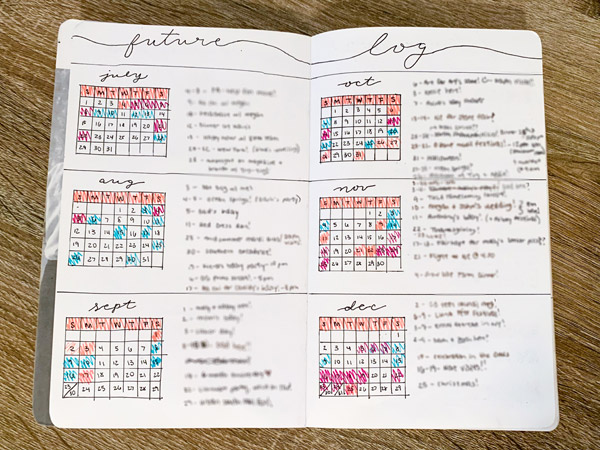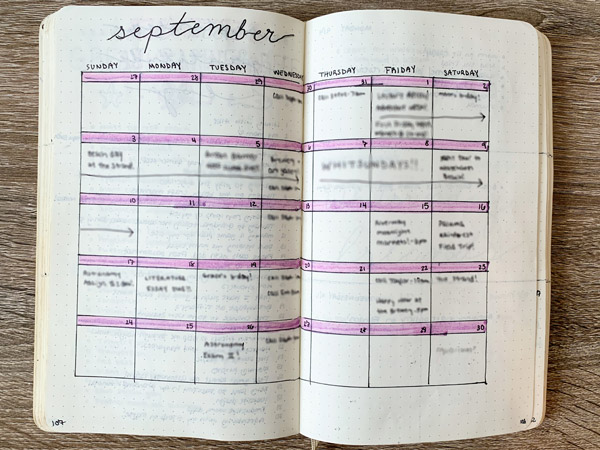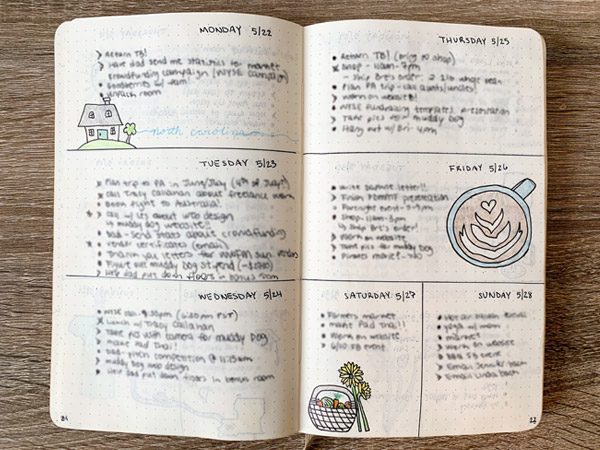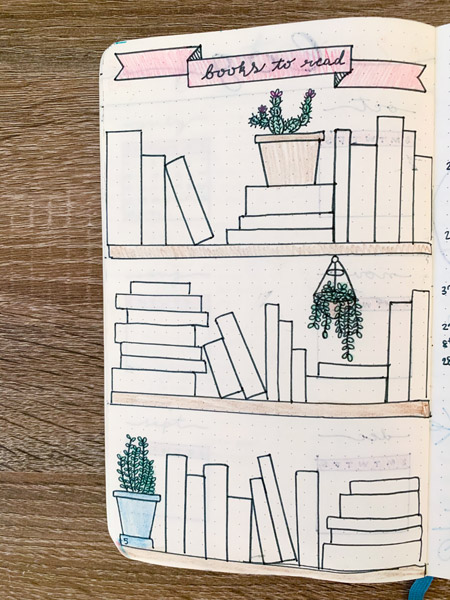After you’ve completed your introduction pages, it’s time to create your first “weekly log.” These pages will make up the main part of your bullet journal. Divide up two pages into seven sections—one for each day of the week—and put the date at the top of each section. Or you could use a whole page for one day, which would be a “daily log.”
For each day, write down your daily to-do list of appointments and things you want to accomplish. As you go through your day, mark things off your list (and reflect on how much you’re getting done!). This is also where you can jot down any thoughts, feelings, and ideas that seem worth capturing.






